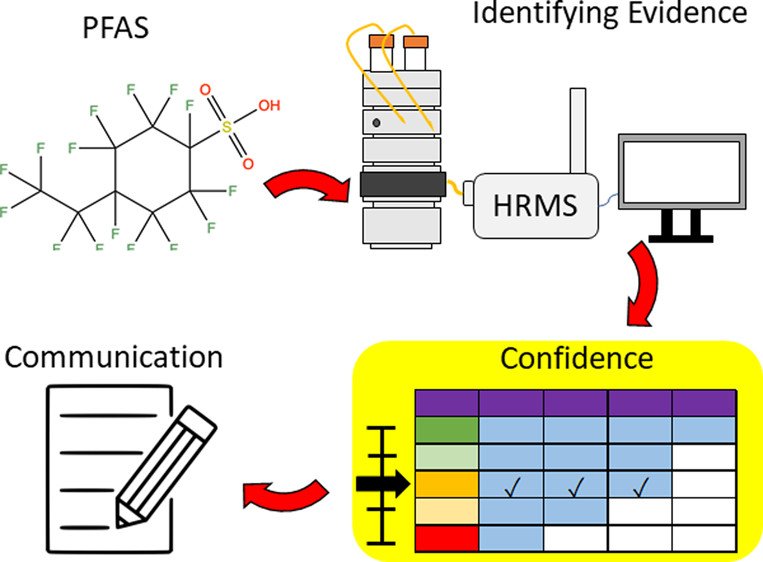Technical advances in environmental chemistry. Practical engineering solutions.
My research mitigates the impacts of trace organic contaminants on sustainable water and nutrient sources.
PFAS in Engineered Systems
Engineered systems like wastewater treatment plants are central to the cycling of PFAS (per- and polyfluoroalkyl substances) in the environment. Analysis of their mobility, fate, and best practices in these systems can harness technology for the protection of human and ecosystem health.
PFAS in Wastewater
Wastewater treatment plants collect PFAS-containing waste streams from across the human-centered environment. Understanding how they move through these complex systems informs practitioners about PFAS use trends and the ultimate fate of these long-lasting toxicants.
A Critical Review of PFAS Analysis, Occurrence, and Fate in Wastewater Treatment Plants
PFAS Impacts on Highway Construction
State DOTs grapple with PFAS impacts and mitigation in all phases of highway project development, construction, and maintenance. But standard practices vary dramatically state-to-state. This National Academies Report Synthesizes DOT practices for identifying potential PFAS contamination and mitigating its impacts on highway construction and maintenance.
and
PFAS Forensics
Environmental contamination from PFAS (per- and polyfluoroalkyl substances) is a concern because these compounds are often persistent, bioaccumulative, mobile, and toxic. Forensic analysis of PFAS-impacted areas can help to determine which PFAS sources contributed to a plume or identify unknown sources of contamination.
PFAS Source Tracking
Determining PFAS sources could facilitate environmental remediation and human health interventions and help to establish liability for contamination. Converging lines of evidence including chemical fingerprinting, site modeling, ands statistical analysis are useful for untangling complex site dynamics.
and
and
PFAS in Iowa Drinking Water Sources: Chemical and Geospatial Patterns
Communicating Identification Confidence
Nontarget analyses are increasingly common for PFASs. The certainty of PFAS identifications must be communicated through a reliable and harmonized approach. We present a confidence scale specific to analysis of PFASs by nontarget high-resolution mass spectrometry. This publication recognized as a Best Paper of 2022 in ES&T Letters.
Exposure to Toxicants
Environmental exposure to harmful chemicals has complex drivers, impacts, and solutions. Research can improve our understanding of risks and help to mitigate them.
Flame Retardants: Chemistry and Policy
Flammability standards for furniture, building insulation and electronics are supposed to mitigate fire risk. However, many flammability standards poorly represent actual fire scenarios and require the use of toxic flame retardant chemicals in products. These flame retardants may not provide a significant fire safety benefit and are associated with adverse health effects such as diminished immune function, endocrine disruption, and cancer. Updated flammability standards can reduce the use of flame retardants while maintaining—or even increasing—fire safety.
Flammability standards for furniture, building insulation and electronics: Benefit and risk
PFAS in Menstrual Garments
Menstrual underwear are reusable, leak-resistant menstrual hygiene products. We analyzed PFAS in extracts of underwear garments and detected twenty PFAS in at least one layer of a garment. All garment layers contained at least one target PFAS. Outer crotch layers, which contact the epidermis, exhibited the highest total PFAS concentrations. Both short- and long-chain PFAS of various subclasses were among the layers, with fluorotelomers detected most frequently. These findings indicate that menstrual underwear may be a source of monomeric PFAS exposure.
Extractable Per- and Polyfluoroalkyl substances in Menstrual Underwear
PFOA in Reproductive Organs
Environmental toxicants like PFOA present particular hazards for female reproductive health, yet PFOA uptake into ovaries and follicular fluid had not been documented prior to this study. In addition to providing insights for livestock health, this research has implications for humans, who have a similar reproductive cycle to pigs. Further, we found that reproductive tissues take up PFOA differently under heat stressed conditions, which are anticipated to be more common on a warming planet.
Manganese Oxide-Coated Sand to
Facilitate Stormwater Recycling
Large cities in arid climates must develop their local water supplies in order to reduce the cost and uncertainty of importing water. Stormwater is a local source that can augment local water supply. However, untreated stormwater could contaminate potable water supplies with pollutants from urban watersheds. I developed a sand coated with a naturally reactive manganese oxide mineral. This material is capable of oxidizing organic contaminants and adsorbing metal cations during stormwater infiltration, and can be regenerated with mild chemical treatments.
Demonstration-scale validation geomedia for treating runoff
Engineered geomedia demonstrate tremendous promise for treating stormwater contamination in the lab, but pilot-scale long-term tests demonstrate that these technologies could be valuable for treating nutrients, metals, and organic contaminants in authentic stormwater infiltration systems.
and
Treating stormwater contaminants with manganese oxide geomedia
Manganese oxide is a naturally-occurring mineral that can oxidize some organic contaminants found in stormwater and suck up harmful metals from stormwater like a sponge. Some contaminants are more amendable to treatment than others, and the stormwater quality matters.
and
The use of manganese oxide-coated sand for the removal of trace metal ions from stormwater
Advanced spectroscopy informing manganese oxide geomedia regeneration
Excavating spent geomedia at the end of its life is costly and disruptive, but mild chemical treatments could regenerate manganese oxides while still in the ground. X-ray absorption spectroscopy reveals why some treatments and mineral phases are more effective.
and










